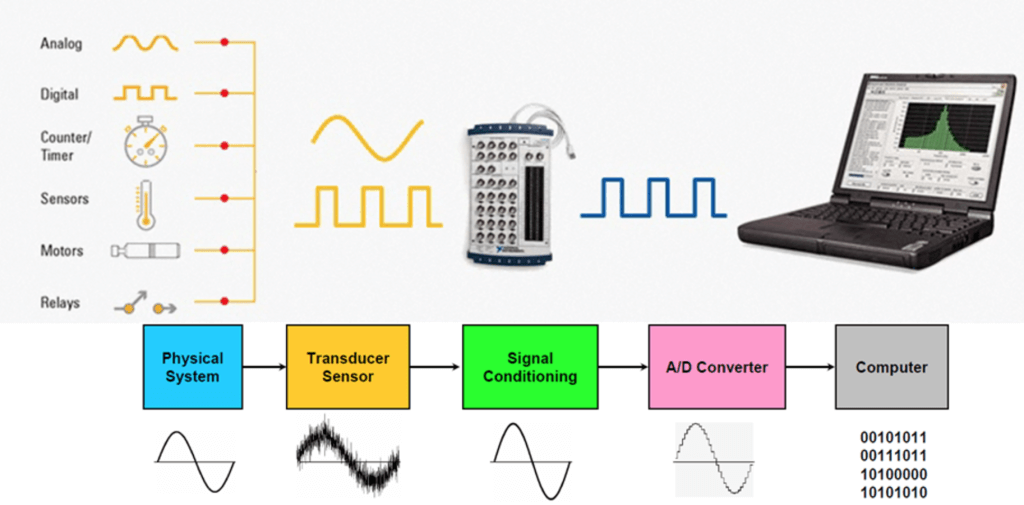Typically, data acquisition samples real-world physical condition signals and converts them into digital values for computer manipulations. Also, the data acquisition system measure electrical and physical current, voltage, light intensity, temperature, pressure or sound using a computer. Actually, data acquisition system (DAQ) or (DAS) converts analog waves into digital values. Think of DAQ as a connection to the physical world.
However, data acquisition system components include:
• Data acquisition system Sensors that convert physical parameters to electrical signals
• Computer programmable software to acquire data from the hardware
• Data acquisition measurement hardware
• An analog-to-digital converter to converter signal values to digital values.
Admittedly, industrial and commercial electronics manufacturers use data acquisition systems to analyze their market. Indeed, they use it to capture environmental conditions and electrical signals on a computer.
However, information collected by the data acquisition system is in analog. An analog-to-digital converter connected to data acquisition system hardware converts analog data to digital data.
Granted, the first data acquisition system launched in the 1960s and designed by IBM. Again, it was a huge collection of computers and hardware.
No doubt, the development of DAQ creates more generic systems to analyze and measure any form of a physical system. Also, a data acquisition system is applied in different industrial and commercial electronics market, and environmental and scientific equipment.

Sensor
Obviously, the range of sensors available today makes it possible to measure almost any physical property of any system. Assuredly, though there is a sensor to measure different aspects of any system, it’s wise to measure only important data. Lastly, once the signal is amplified and cleaned by software and hardware, it is fed to a computer.
SWOT analysis
After collecting data with a data acquisition system, it is analyzed by a computer, nevertheless, SWOT analysis offers more insight. SWOT analysis is an acronym for strength, weaknesses, opportunities, and threats.
SWOT analysis is an auditing tool for organizations and its environment. Also, with SWOT analysis you can determine the internal and external factors that can affect your business positively or negatively.
Furthermore, internal factors are your strengths and weaknesses while external factors are threats and opportunities. No doubt, digital data from data acquisition systems can either be threats or opportunities for your product in the market. Nevertheless, aim to turn your weakness into strengths and your threats into opportunities.
Finally, SWOT analysis helps you add value to your products and services to attract new customers and maintain old customers.
In addition, digital data from the data acquisition system present possible threats to your products. SWOT analysis shows you how to turn threats into opportunities, other uses of
SWOT analysis include:
• Seizing opportunities
• Counteracting threats
• Addressing individual issues
• Building on strengths and
• Minimizing weaknesses.